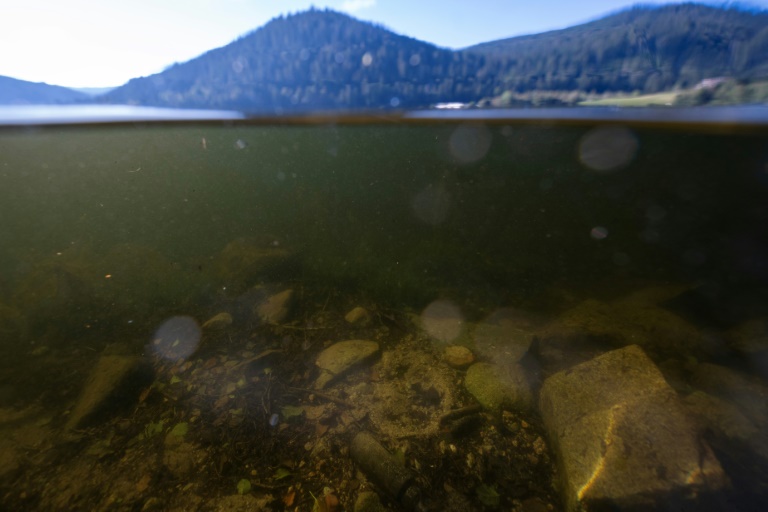The seemingly pristine Lake Gerardmer in the Vosges mountains of eastern France is home to a sad legacy of 20th century conflicts: dozens of tons of unexploded ordnance from the two world wars.
The lake, which is 660 metres above sea level, is a popular summer swimming spot and is also sometimes used as drinking water for the picturesque town.
The mayor of Gerardmer, Stessy Speissmann-Mozas, began raising questions about the safety of the water after the environmental group Odysseus 3.1 said that samples taken from the lake showed high concentrations of TNT explosives and metals such as iron, titanium and lead.
The group said they had found artillery shells in the mud at the bottom of the lake. Some were “hollowed out, allowing the explosives they contained to escape,” Odysseus 3.1 founder Lionel Rard said in a documentary broadcast by France 5 in May.
Samples sent to a German lab showed TNT levels that were among the “highest ever measured by that team,” and metal concentrations were found to be above legal limits.
– ‘Put all this in the lake’ –
The mayor has said the government should pay for a more detailed study of the risks posed by the munitions originally dumped by the French army at Gerardmer. As the scene of multiple conflicts over the past century and more, France is particularly affected by unexploded ordnance.
Most date from the world wars, but shells from the Franco-Prussian War of 1870 are still being found, says Charlotte Nihart of Robin des Bois (Robin Hood), an association that maps the number of unexploded bombs throughout France.
Every year, approximately ten people die nationwide from unexploded ordnance.
During the wars, retreating armies would dump ammunition in lakes to prevent enemy troops from getting their hands on it, Nihart said.
In Gerardmer, the removal operations began in 1977 after a man was burned by a phosphorus grenade. They continued until 1994, with explosives being removed up to 10 metres below the water surface.
“They destroyed 120 tons of ammunition, consisting of almost 100,000 individual pieces of different types from the periods 1914-1918 and 1939-45,” said Pierre Imbert, assistant to the mayor and former fire chief and diver.
Ordnance disposal teams brought each explosive to the surface, where they were able to remove the detonator.
“Then they blew it up at the end of the lake,” Imbert recalls.
The photographs he kept of the acts of destruction show everything from ‘hand-made grenades from the First World War, more recent examples from the Second World War and even a small axe’.
Officials have halted the munitions clearance because it is difficult to work further from the shore and deeper under the mud at the bottom of the lake, the regional authority told Robin des Bois.
The region estimates that there are still around 70 tonnes at the bottom of Gerardmer.
“There is no way to evaluate the amount of munitions still in the mud” up to 30 meters below the surface, Imbert said.
– ‘Disinfect everything’ –
Since 1945, some of the ammunition has been distributed via the lake’s currents.
The state must “clean up everything around the lake,” said Aurelie Mathieu, head of the AKM ecotourism association in the Vosges.
But the regional authority refuses to act solely on the basis of the Odysseus 3.1 analysis.
“Neither the ARS (regional health service) nor Anses (national health and security service) were involved in this investigation and we have no details on the methods used to collect and analyse the samples,” the company told AFP.
In February, samples were taken by government agencies and analysed by “several French and German laboratories,” it added.
“The first results confirmed the conclusions of previous campaigns: no worrying levels were found” in the lake water, the regional authority said.
No health risks have been identified, either for drinking the water or for swimming in it, it added.
One company has bid to map the munitions still lying on the bottom of the lake.
Mayor Speissman-Mozas said it would cost “almost 300,000 euros ($334,000).”
He is interested in the offer, as long as the national government pays.
“It is the French army that has put all this ammunition here,” he reasoned.
mlx/tgb/sjw/gil







